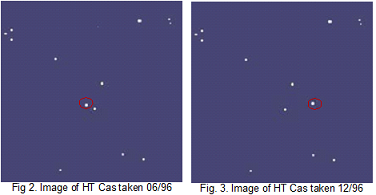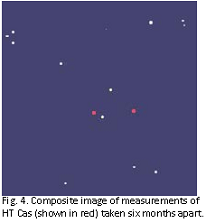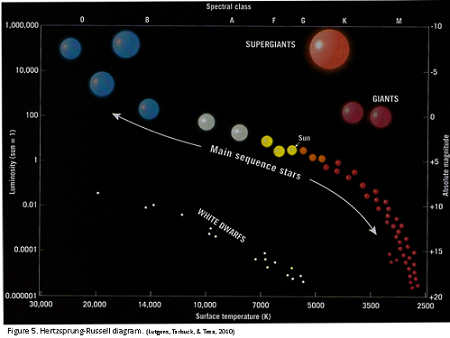Reference no: EM131118572
Part 1: Finding the Distance to Stars Using the Parallax Angle
Instructions:
Read Chapter 15 and Appendix D (pp. 543-545) in the textbook and the background information below.
Answer the three questions at the bottom directly in this lab worksheet.
This NASA web page provides additional explanation:
https://imagine.gsfc.nasa.gov/features/cosmic/nearest_star_info.html
Background:
Stellar Parallax is the apparent shift in the location of a star due to the orbit of the Earth. In other words, the star will appear to be in a different place depending on the line of sight from the Earth. By knowing the diameter of Earth's orbit and by measuring the angle of apparent shift (the parallax angle), astronomers can calculate the distance to the nearby stars using trigonometry. This method has been used for centuries. The ancient Greeks were able to measure some of the closest stars this way. Today, sophisticated telescopes have greatly enhanced this method. Figure 1 is a graphic from your textbook showing how this works:
Assignment:
For this assignment, you will determine the distance to a star, "HT Cas", using the method of stellar parallax. Figure 2 and 3 below are photos of HT Case, taken six months apart:

When we super-impose these photos, we get the following image (figure 4):

You can see that the position of the star appears to have changed over the six-month time period. However, it is actually the angle from which the photos were taken that has changed. During that 6-month period, the Earth moved from one side of the sun to the other.
Using a stellar astrometric catalog, we find that the two stars closest to HT Cas are a distance of 0.01 arcseconds apart. Based on this information, we can estimate that the angle of shift of HT Cas (the parallax angle) to be approximately 0.015 arcseconds apart.
We also know that the radius of the Earth's orbit is 1.0 A.U. (astronomical units).
Using these two measurements, we can then determine the approximate distance to HT Cas using the following equation:
d= distance to HT Cas
a=radius of the Earth's orbit
p=parallax angle
1. Given the above equation and information provided, about how far away is HT Cas?
a. 133 parsecs
b. 67 parsecs
c. 33 parsecs
d. 0.015 parsecs
2. Your answer was calculated in parsecs. Given that 1 parsec = 3.2616 light years, about what is the distance to HT Cas in light years? (Your answer in parsecs X 3.2616 light years = The Distance to HT Cas in light years).
a. 0.025 light years
b. 217 light years
c. 434 light years
d. 219 light years
3. Based on your answer, do you think this is a star that we might be able to send a space probe to? Why or why not? Support your answer.
Part 2: Using a Hertzsprung-Russell Diagram
Instructions: After reading the Unit VIII lesson, click here to access the NASA web page "Stars" and answer the questions below using Figure 5. You can also copy and paste the web address into your browser:
https://science.nasa.gov/astrophysics/focus-areas/how-do-stars-form-and-evolve/
Background:
Notice that the stars in Figure 5 are not uniformly distributed. Rather, about 90 percent of all stars fall along a band that runs from the upper-left corner to the lower-right corner of the H-R diagram. These "ordinary" stars are called main-sequence stars. As you can see in Figure 5, the hottest main-sequence stars are intrinsically the brightest, and, conversely, the coolest are the dimmest. The absolute magnitude of main-sequence stars is also related to their mass. The hottest (blue) stars are about 50 times more massive than the Sun, whereas the coolest (red) stars are only 1/ 10 as massive. Therefore, on the H-R diagram, the main-sequence stars appear in decreasing order, from hotter, more massive blue stars to cooler, less massive red stars (Lutgens, Tarbuck, & Tasa, 2014).
Assignment: Use Figure 5 to answer the questions. Once all questions have been answered for both part 1 and part 2, save this worksheet with your last name and student number and upload to Blackboard for grading.

1. Main Sequence stars can be classified according to which characteristics? What are the characteristics of our Sun?
2. Which main sequence stars can be found with a surface temperature of between 3000K-4000K? Which stars have a luminosity about 100 times less than that of the Sun?
3. Briefly describe the solar evolution time-line of a common star like our own from formation through collapse.